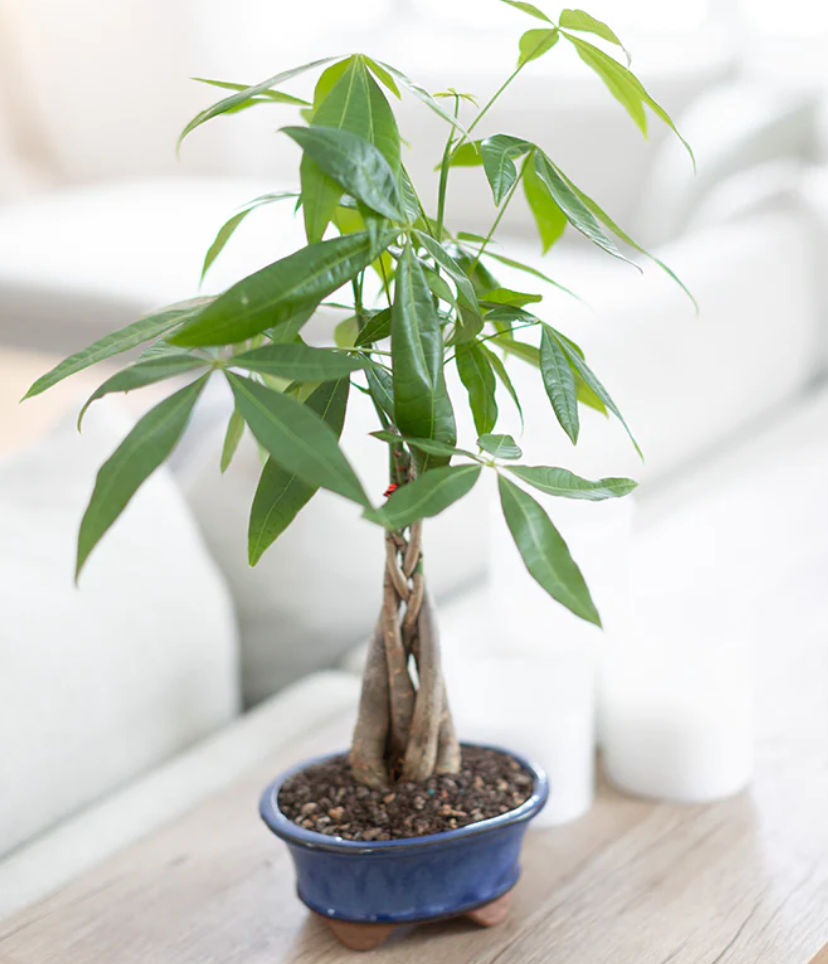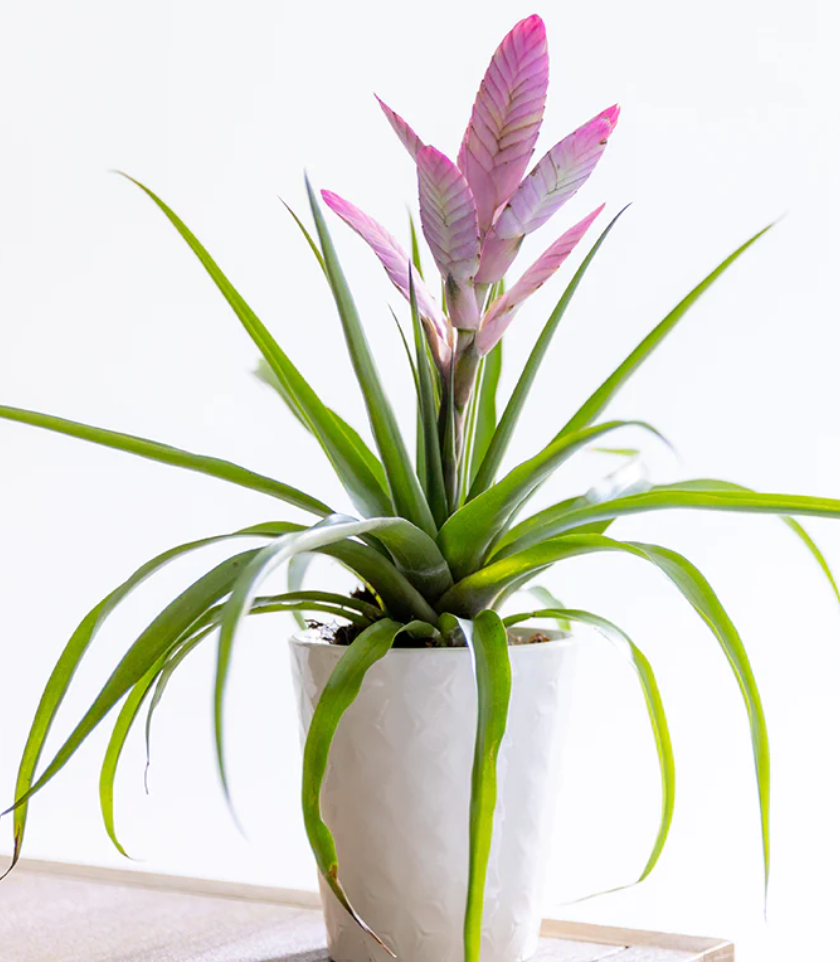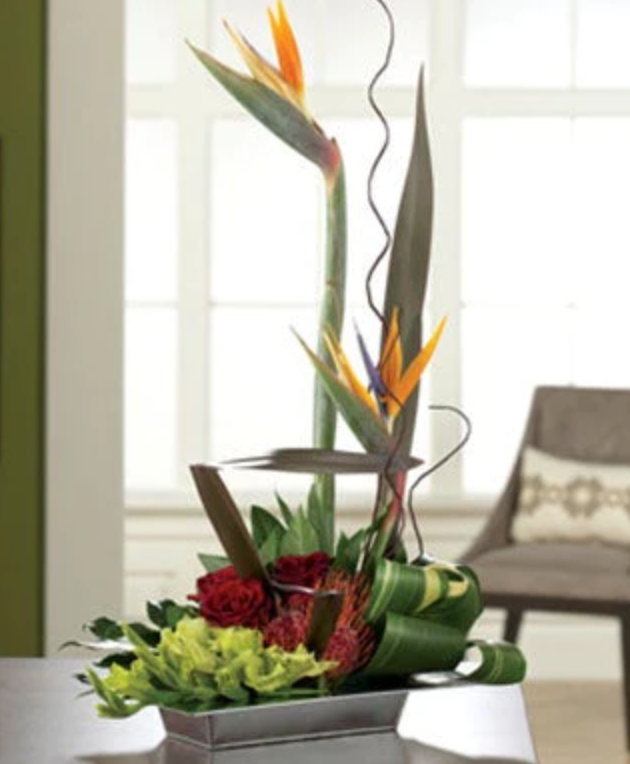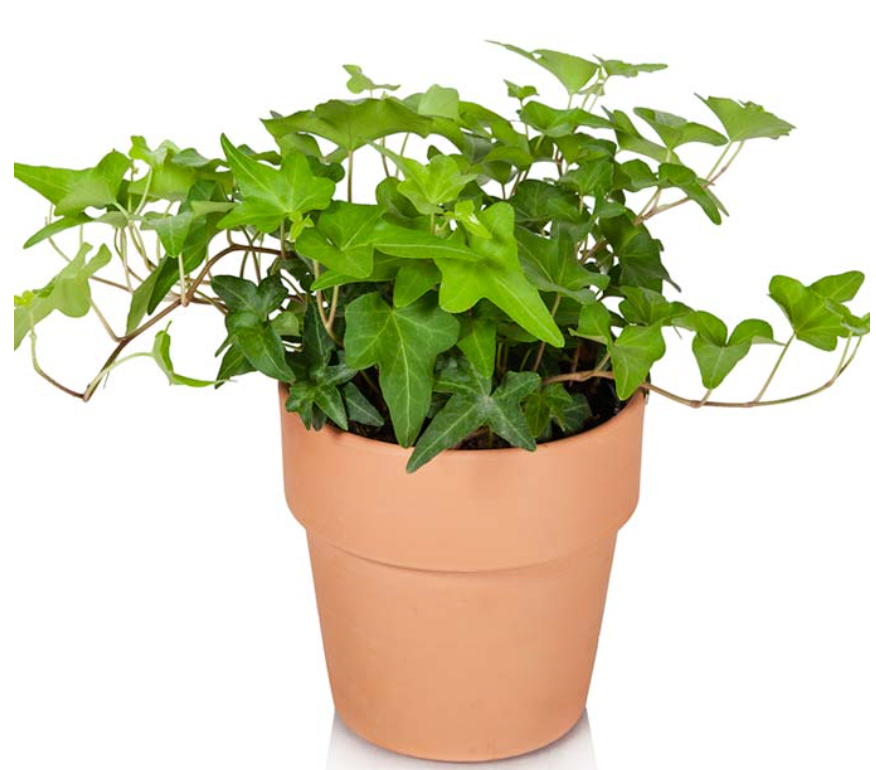Caring for a money tree is relatively simple, and following these guidelines will help ensure its health and longevity:
Light: Money trees thrive in bright, indirect light. Place your plant near a window where it can receive filtered sunlight, but avoid direct sunlight as it can scorch the leaves.
Temperature: These plants prefer temperatures between 65°F and 75°F. They are sensitive to cold drafts and sudden temperature changes, so keep them away from doors, windows, and air conditioning vents. The kitchen seems to be the most popular space for money trees, but due to the fluctuation in temperature from the refrigerator and stove, we’d suggest keeping your special plant in your office or bedroom.
Watering: Money trees prefer moderate watering. Allow the top inch of soil to dry out before watering again. Overwatering can lead to root rot, so ensure proper drainage by using a well-draining potting mix and a pot with drainage holes. Send Plants takes watering into consideration and insures that the money tree is well supported and potted to perfection.
Humidity: Money trees appreciate moderate humidity levels, but they can tolerate average indoor humidity. Misting the leaves occasionally or placing the plant on a tray filled with pebbles and water can help increase humidity.
Fertilization: Feed your money tree with a balanced, water-soluble fertilizer once a month during the growing season (spring and summer). Follow the instructions on the fertilizer packaging for proper dosage.
Pruning: Trim off any yellow or brown leaves to maintain the plant's appearance and health. You can also shape the plant by pruning unwanted branches.
Repotting: Money trees typically need to be repotted every two to three years or when they outgrow their current container. Use a slightly larger pot with fresh potting soil to provide room for growth.
Pest control: Money trees are generally resistant to pests, but occasionally, they can be susceptible to spider mites, mealybugs, or scale insects. If you notice any signs of infestation, treat the plant with an appropriate insecticide or try using natural remedies like neem oil or soapy water.




